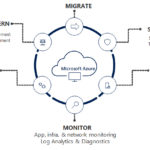How Is Low-Code Development Transforming The SaaS Industry
Software developers and computer programmers have long dedicated their efforts to building applications. They have traditionally relied on hand-coding programs and tailoring them to specific requirements. Nevertheless, the landscape has changed in recent years with the growing popularity of low-code development platforms. As a result, businesses have begun embracing these platforms to streamline application development and strengthen their competitive advantage.
The emergence of new technology emphasizes the need for technology companies and businesses to grasp the significance and capabilities of low-code platforms to remain competitive in the industry. Additionally, developers must recognize their role in this era, while businesses should understand how to integrate low-code solutions effectively within their organizations.
What Is Low-Code Development?
In contrast to traditional programming, which demands extensive hours of rigorous critical thinking and problem-solving, low-code development presents a model-driven interface. This interface enables developers to easily drag and drop components, simplifying the development process. Models are frequently employed to outline the system’s functionality before commencing actual development.
Also Read This: How Can Software Developers Avoid Burnout & Improve Productivity?
Low-code tools accommodate developers of various skill levels, including professionals with limited or no coding experience.
These platforms necessitate minimal training and offer significantly lower costs compared to hiring dedicated software developers. As a result, low-code practices are becoming increasingly attractive options for SaaS companies initiating the software development phase.
As an illustration, my company utilizes a low-code tool to design, construct, and deploy responsive websites. With this tool, we can avoid the need for manual coding of the entire website while efficiently managing our content, including videos and blog posts, within a single platform.
Moreover, employing a low-code development environment offers several additional advantages, such as:
1. Model-Driven Development
A key advantage of any low-code platform is its utilization of a model-driven development environment. This environment fosters an intuitive user interface that enables developers to swiftly and effortlessly visualize their creations. Consequently, developers can rapidly build custom applications and enhance productivity across the board. Additionally, this approach facilitates the involvement of other business professionals in the application development process.
2. Collaboration
Moreover, low-code platforms foster enhanced collaboration among developers and professionals from non-development teams, who can contribute to crafting a solution. This improved communication is facilitated by a range of built-in tools available in low-code development platforms. These tools effectively track version control, facilitate feedback, and support seamless information sharing.
3. Scalability
While low-code and no-code development platforms are relatively new in the development landscape, they have yet to reach the scale of traditional coding technologies in billion-dollar enterprises. Nevertheless, it is important to acknowledge that low-code platforms first address the question of user accessibility before tackling the scope of what can be built. As a result, numerous prominent companies, educational courses, vibrant communities, online stores, and various other businesses rely on low-code tools to fulfill their development requirements.
4. Reusable Components
While current development technologies aim to facilitate the reuse of components, they often demand substantial knowledge of software development. In contrast, low-code platforms provide the same advantage without requiring extensive expertise in coding. With a vast library of reusable components, developers only need to create each component once, enabling its reuse throughout the application. This approach saves developers a considerable amount of time and significantly enhances development speed.
Should Developers Be Worried?
The extensive digital transformation in the development industry has raised concerns among traditional software developers about the sustainability of their roles. However, it is important to note that while Gartner predicts that by 2024, approximately 65% of global applications will incorporate aspects of low-code development, this does not imply that traditional software developers will become obsolete.
Instead, it is more likely that the two forces will converge and collaborate, driving further transformation in the SaaS industry. This is primarily because low-code development still faces certain limitations, such as the inability to create intricate and complex software solutions. In essence, low-code development platforms have the potential to replace software developers in cases involving relatively simple, do-it-yourself applications with limited functionality and a narrow range of features.
However, once a certain level of complexity is surpassed, specialized developers are needed to accomplish the task. As a result, a synergistic relationship may emerge between traditional software developers and low-code platforms. In this scenario, developers can harness the capabilities of these platforms to achieve their specific objectives rather than relying solely on them to handle the entire project.
To foster synergistic relationships and effectively leverage no-code/low-code solutions, begin by thoroughly analyzing the organization’s current technology stack, business processes, and developer resources. This analysis will help identify potential opportunities for utilizing no-code/low-code solutions. Subsequently, engage with both developers and citizen developers to gain insight into their unique perspectives, needs, and concerns regarding the adoption of these solutions. By initiating these two steps, you can establish a collaborative culture within the organization that appreciates the contributions of both developers and citizen developers. This culture will also provide opportunities for them to collaborate and learn from each other.
In conclusion, developers need not worry about losing their jobs to platforms that can perform their tasks more efficiently. Historical evidence from the past few decades suggests that there will continue to be a high demand for technology experts and developers, regardless of how advanced technology becomes. In fact, with the rapid advancements in technology witnessed in recent years, the demand for software developers has only increased in line with these technological trends.



![[New Post] 7 Major Challenges in adopting IoT for Retail Companies](https://alliedc.com/wp-content/uploads/2015/04/IoT-150x150.png)
![Big Data Hadoop Stack Training [Short Videos Part III]](https://alliedc.com/wp-content/uploads/2015/09/DataScienceDisciplines-150x150.png)


